Motion Instruments Enduro Expert System
(discontinued)
| Where To Buy | |||
|---|---|---|---|
Free shipping on orders over $50 (continental U.S. only).
International shipping available. Some exclusions apply. |
|||
Free shipping on orders over $50 (continental U.S. only).
International shipping available. Some exclusions apply. |
|||
'Race on Sunday, sell on Monday.' While this adage about race technology trickling down to the consumer level certainly applies to most components seen on World Cup and EWS race bikes, the same can't be said for the increasingly ubiquitous data acquisition systems (DAQ) that just about every major team has been using for several seasons. Despite their popularity within the race paddock, aftermarket availability has been almost nonexistent. Aside from the complexity and expense, the other significant challenge is that a lot of the systems seen on the race circuit are bespoke items designed by individual team mechanics or engineers so they lack the scalability needed to be used by the masses. If not user friendly the same can be said for the software, which can render the several thousand dollars worth of sensors and circuitry utterly useless without a technician to interpret it.
Motion Instruments is hoping to change all that. After more than three years of development in collaboration with Greg Minnaar and several manufacturers, they have launched a minimalist yet powerful DAQ system in conjunction with their suspension analytics app, Motion IQ. In addition to supporting several factory teams, they are bringing this same professional-level suspension analysis to anyone with an iOS phone and a Bluetooth connection.
We received one of their first Enduro Expert production units in April and got straight to work dialing in some brand new suspension components.

Enduro Expert System Highlights
- Provides user-friendly bike suspension data to gain valuable insights and help bikes perform better
- Bike specific analysis based on geometry and leverage curve
- Powerful, phone-based analytics app (iOS only, Android in the future)
- Easy to use, intuitive data displays
- Comprehensive bike balance analysis for compression and rebound
- Advanced A/B reports comparing runs side by side
- Cloud storage integration automatically backs up, saves, and distributes data
- Low profile design
- Advanced sensor array with 99% accuracy
- High sample rates (200 times per second)
- Lightweight (under 250 grams for Enduro Expert version)
- Mounts easily on most bikes
- Breakaway mounting for additional crash protection
- Wireless handlebar button for marking segments while riding
- Quickly removable
- Low maintenance
- Can be used independently or in collaboration with a suspension tuner
- Pre-Order Price: $800 for Enduro/DH Expert // $1,300 for Enduro/DH Pro System
- Motion IQ app levels: Free, Expert or Pro // Up to $30 per month / $300 per year
- Possibility for remote consultation and tuning through MotionIQ Coach
In the box:
- 200mm Fork Tracer, a durable linear potentiometer
- Tracer transceiver programmed to 75mm
- Tracer handlebar button
- 75mm potentiometer
- Air cap

Initial Impressions
What's most striking about the Motion Instruments Enduro Expert system is how little there is to it. Having spent several seasons documenting the proliferation of DAQ technology within the World Cup pits, as well as taking part in a test session using this same Yeti SB150 with a different system, the one constant has always been complexity. So the Motion Instruments system with its slim potentiometer connected to a tiny data logger by a single cable was a welcome change. Up front, the fork tracer used on the Expert model is the bulkiest part of the system, but even then it only has two pieces and no wires (the Pro model gets a second potentiometer instead). The entire system, including mounting hardware, weighed just 242 grams (0.53-pounds) but felt sturdy and well built.
Installation
The front tracer installed in minutes with no tools. Simply unthread the air cap, put the slotted mount of the tracer over the air valve and reinstall the air cap. The other half sticks to the lower just like a GoPro mount and you're done. How easily the rear tracer installs is going to be different for each bike, with some designs proving more difficult than others. However, there are multiple options available and a growing section on their blog dedicated solely to mounting the rear tracer on different frames and shocks. In my case, installation on a Yeti SB150 and FOX Float X2 was straightforward and provided me with two options. While I opted to mount the tracer entirely on the shock, mostly for demonstration purposes, it would have been even easier to put one of the stick-on mounts in front of the shock bolt. The only modification I made was to bend the metal bracket slightly to better fit the shape of the air can. Because care needs to be taken to make sure the tracer is parallel with the shock, both vertically and horizontally, it's a measure-twice-stick-once sort of affair. All told, including modifications, the entire installation process took about 20 minutes. Like mounting a number plate, you could probably do it in less time, but it's not going to look good either.
It should be noted the mounting tape is extremely sticky and can potentially peel up any graphics that might be underneath. If this is a concern it's best to put a piece of clear tape over the graphics first to protect them.




Setup
Downloading the app and calibrating it to the sensors was as easy as it gets. When opened, the app guides you to select your bike from a fairly extensive list of pre-programmed geometry and leverage curve files provided by the manufacturer, then simply hit the calibrate button, hold the bike off the ground so the sensors register top out position, hit the calibrate button again, and you're ready to go. This calibration step can be done at any time and I usually did it again at the start of every test session.
Test Impressions and the Motion IQ App
I'm not sure I could overstate how easy and intuitive the Motion IQ app is to use. While understanding the data will take a bit of time and practice, navigating the app and its multitude of functions felt easy straight away. For a far more in-depth look into the app, its capabilities, and how to interpret the data, Motion Instruments has a 'Deep Dive' video that's a must-watch. While the app offers a veritable rabbit hole of data to dive down, we'll focus on a few of the standout features we found most useful.
Setting Sag: By far the most important aspect of a properly tuned setup is having the correct spring rate. Get it wrong and you'll end up using the other adjustments ineffectively trying to correct for it. The sag function on the app allows the fork and shock tracers to calculate sag for you so you don't have to fiddle with the o-rings and measuring tape. It's also possible to see the sag figure taken from the shock as vertical travel at the rear wheel. Depending on the leverage curve of the bike they might not be the same. In the case of the Yeti SB150, 18mm sag accounts for 28% at the shock but 30% at the rear axle.
Axle Position Histogram: This is an incredibly useful metric for visualizing how your fork or shock use their travel. Whereas the o-ring might tell you max travel, it can't speak to the efficiency of how you use the available travel. An overly stiff fork may come close to bottom-out one time and ride quite high the rest of the time, but looking at the o-ring you might be left with the impression that the spring rate is correct. The histogram keeps track of every front and rear axle movement in 10mm increments and displays them in graphic form.

If all the bars are off to the left, the fork or shock is fairly stiff and not using its deeper stroke very often. If the bars are way off to the right, it might be too soft. If the graph drops off steeply, it might be ramping up to hard. If the slope is too shallow, it might not be progressive enough. If you want to move the bars to the left, add air; move them to the right, remove air; steepen the slope, add a volume reducer; reduce the slope, take one out.
The Motion IQ app is a tool and not a teacher – you won't see any suggestions of what to do or what an ideal setup looks like. That's up to you, but it provides clean, accurate data to inform your decisions.
Waveform: The waveform displays the compression and rebound movements of your front and rear axles over time. The blue line is the front axle and the orange line is the rear axle. The more aligned they are, the more balanced your suspension. Again, it won't tell you if they are moving too much or too little, that part is up to the rider to decide, but it will show very clearly if the two axles are moving in a more or less coordinated way. If one line is far taller than the other, it's using more travel. If it's not returning as far on the downslope, it is probably packing up. If the slope of the downstroke is more gradual, it might be rebounding more slowly.


Balance: What's unique about the Motion IQ app is its attempt to visually represent suspension balance. There are dozens of different ways that you can look at it, and I would again call your attention to the Deep Dive video for a more in-depth look, but I tended to look at it in two ways. 'Front & Rear Speed Balance' looks at how fast each axle was moving and how far the stroke was for a given speed. This helps visualize if the axles are moving at a similar rate over similar impacts and similar distance (balanced spring rate and compression damping in terms of axle speed).

The other option I looked at was 'Zenith' which refers to the point between both compression and rebound strokes where the axle has to stop before it can change direction. If this point is well balanced then your suspension should be using relatively equal amounts of travel.

In all cases, you can also view travel as actual millimeters or equalized as a percentage of travel if your bike has different amounts front and rear. Additionally, fork travel can be viewed as actual millimeters of travel (170mm in this case) or as vertical movement relative to the ground (152.8mm). I tended to focus at the more macro-level of the compression data, but you can also parse it into what feels like a hundred other options. These include high- and low-speed axle movement, different parts of the rebound stroke, and strokes limited to a certain length, between a certain percentage of travel, or a certain speed.
Note that the balance figure is just an algorithm and that it represents mathematic balance based on this algorithm while assuming that a rider's mass – which averages 5 to 7 times heavier than the bike – remains centered in a constant position between the axles. It doesn't imply that the bike will feel perfectly balanced or that a balance figure of zero is even a good idea. Every rider has a preference, and different trails and riding styles require different setups. I experimented with a range of settings until I learned how to get the lines to move in different directions. I even got them to read '0' on a few occasions, but that setup wasn't for me and had a slight sensation as if the bike was riding a bit low in the front. As a general rule, most professional enduro and DH racers will end up with a fork that sits slightly taller and rebounds quicker, and a rear that settles a bit lower in its dynamic sag and rebounds a touch slower. Eventually, I found that I preferred a balance range that was consistently in the +5 to 15% range, meaning the fork was sitting up just a touch taller than the rear shock (a negative balance indicates the opposite). I treated this range as a set of guardrails to stay between while repeatedly experimenting with other setups.
Individual Compression and Rebound Data: Above the histogram is separate data for axle position (min, max, average, total), and compression and rebound strokes (max speed, average speed, 95th percentile speed). This provides a really quick look at your dynamic sag (where the bike is sitting while you ride as opposed to static sag), as well as compression and rebound speed data. It's easy to toggle between front and rear axle tabs, and the app remembers where you were so you're always comparing the same set of figures as you switch back and forth.

How Was the Data Used?
The first thing I focused on was the spring rate, which meant spending a lot of time looking at the axle position histogram. It showed that I got full fork travel a few times, but barely used any travel in the 130-160mm range. It also showed a steep drop after the 120mm mark. My dynamic sag was in a good spot at around 25%, so the issue probably wasn't the spring rate but the two volume reducers that came stock in the fork. Keeping pressure the same, I pulled one out and immediately the histogram shifted a bit to the right and the slope became more linear. The front of the bike then felt a touch calmer, deflected a bit less on repeated impacts, and maintained better steering geometry when transitioning weight front to back through corners. The perceived change in handling was relatively small, but it was obvious on the graph.
I'm confident enough to claim it is far superior to 'going by feel' both in the quality of the tune you can achieve and the efficiency in which you can find a base setting and make refinements.
At the rear, the bike felt harsh at times like it was way too hard or had too many spacers; otherwise it felt spot on. This is where data analysis outperforms our ability to 'feel' a problem, and if I had gone the route of softening the rear shock instead of looking at the data I would have made the problem worse. The compression harshness wasn't the result of too much air, the histogram showed plenty of deep travel and an average ride height about 10% lower than the fork. The source of the harshness was rebound. A fork or shock that cant rebound fast enough gets stuck down in the firmer part of its stroke, giving the impression that it is overly firm either from too much pressure or excessive damping. Reducing either of these just makes the problem worse, not better. By the time I settled on a base setting I went up 3psi in the rear, not down, but sped the rebound up tremendously. The positive effect being an increase in control and traction at the rear tire, but also far better cornering as the bike was no longer inclined to squat out of corners and instead returned to its ideal geometry quickly. This was especially noticeable in repeated bermed corners where the slow rebound always made the bike feel like it was late steering out of one corner and into the other.
With a solid base setting established, I played around with a half dozen alternatives going up and down in spring rate as well as increasing and decreasing the progressivity of the spring curve. Doing this with the Motion IQ app made it easy to 'see' what I was feeling on the bike. It took a few days of testing, but I also came away with an equally balanced but slightly softer setting I used for enduro racing.
For my 155-pound (70kg) weight, the following settings are where I ended up for my local trails and bike park. Note that settings on the 2021 FOX Grip 2 and Float X2 dampers used in this test do not translate to 2020 models. All settings are counted counter-clockwise from fully closed.
| Yeti SB150 - 150mm | Pressure | Volume Spacers | LSC | HSC | LSR | HSR |
| FOX 38 - 170mm | 83 | 1 | 10 | 7 | 8 | 7 |
| FOX Float X2 | 166 | 1 | 15 | 7 | 15 | 7 |
Things That Could Be Improved
The overall package of both the system itself and the Motion IQ app is truly impressive, but there is a bit of work to be done with mounting. Up front, the current tracer doesn't account for the air bleed ports in the new 2021 FOX forks, but this an easy fix I'd expect to see addressed in short order. In the rearm it's a bit more challenging given the variety of suspension designs, but a few changes might help. First would be including rounded mounting brackets that better fit the shape of an air shock. Second, it would be helpful if mounting brackets could be zip-tied in place as well as taped. I ended up stretching a large o-ring over the reservoir mount after the tape came off from excessive heat, but a slot for a zip-tie would have been an easier solution. Also, I'd like to see either more double-sided tape pieces included (similar to what you get with a GoPro) or a one-sided rubber adhesive that keeps the mount secure but allows it to be reused repeatedly if zip-tied in place. These aren't deal-breaking issues and I expect mounting options will improve quickly as more of the Motion IQ systems get out in the wild, but, for now, it is the one possible Achilles heel for an otherwise outstanding product.
Motion Instruments has been testing potentiometers with carbon covers for added impact and moisture protection. This too would be a welcome addition for riders in rainier climates or whose bike design necessitates mounting the rear tracer in a more vulnerable position.

What's the Bottom Line?
An expensive data acquisition system and the accompanying app subscription could be a sound investment or waste of money depending on your personal riding goals, ability, or tuning prowess. If you want a simple-to-use system that will make recommendations for you, then it's probably better to spend your cash on something like a Quarq Shockwiz. If you're a serious racer, have several bikes, ride a variety of different terrain, or just enjoy the process of testing and refining your setup, there's no denying that using data acquisition can help. I'm confident enough to claim it is far superior to 'going by feel' both in the quality of the tune you can achieve and the efficiency in which you can find a base setting and make refinements. This isn't to say you can't get a great setup without DAQ or that it allows you to skip the tedious practice of repeated runs and bracketing settings. Using data lets you see suspension performance broken down and separated into all its parts in a way that is impossible to do on feel alone, allowing for much more intentional and specific tuning without guessing.
Is using the Motion Instruments system for everyone? Certainly not. Could everyone benefit from it? Probably. Should you buy it? That's a hard one to answer, but we wouldn't talk you out of it.
Visit motioninstruments.com for more details.
Vital MTB Rating: 4.5 Stars - Outstanding
About the Reviewer
Lee Trumpore - Age: 40 // Years Riding: 28 // Height: 5'10" (1.77m) // Weight: 160-pounds (72.6kg)
In more than a decade of professional DH racing, Lee won a Collegiate National Championship and was a mainstay at major North American races as well as occasionally snagging a last page result in the World Cup series. Testing prototype components and suspension setups was common during his racing days. He has a smooth, light style on the bike even while holding it wide open. An East Coast native, his favorite trails are fast and flowing technical descents with as many corners as possible and just enough moisture to keep things interesting. Nowadays, rather than racing the clock, he'd rather enjoy a rad descent after a hard pedal to the top. He's also a photo mercenary for Vital MTB and other industry clients.
Specifications
| Where To Buy | |||
|---|---|---|---|
Free shipping on orders over $50 (continental U.S. only).
International shipping available. Some exclusions apply. |
|||
Free shipping on orders over $50 (continental U.S. only).
International shipping available. Some exclusions apply. |
|||


















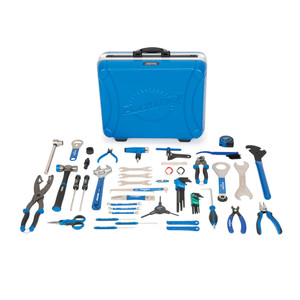
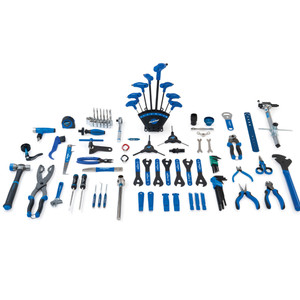
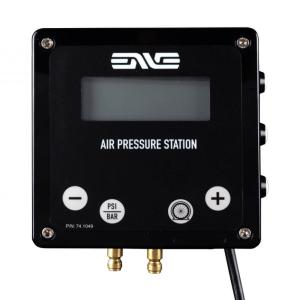

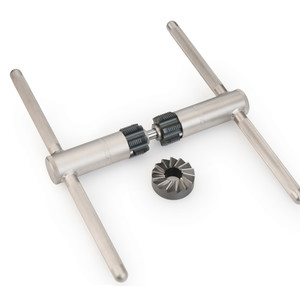
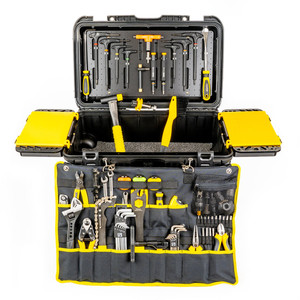

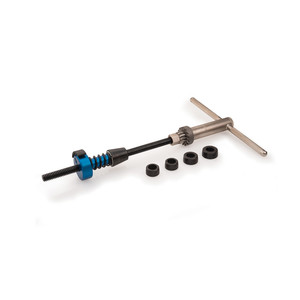







18 comments
Post a reply to: Tune Suspension Like a Pro - Motion Instruments Data Acquisition